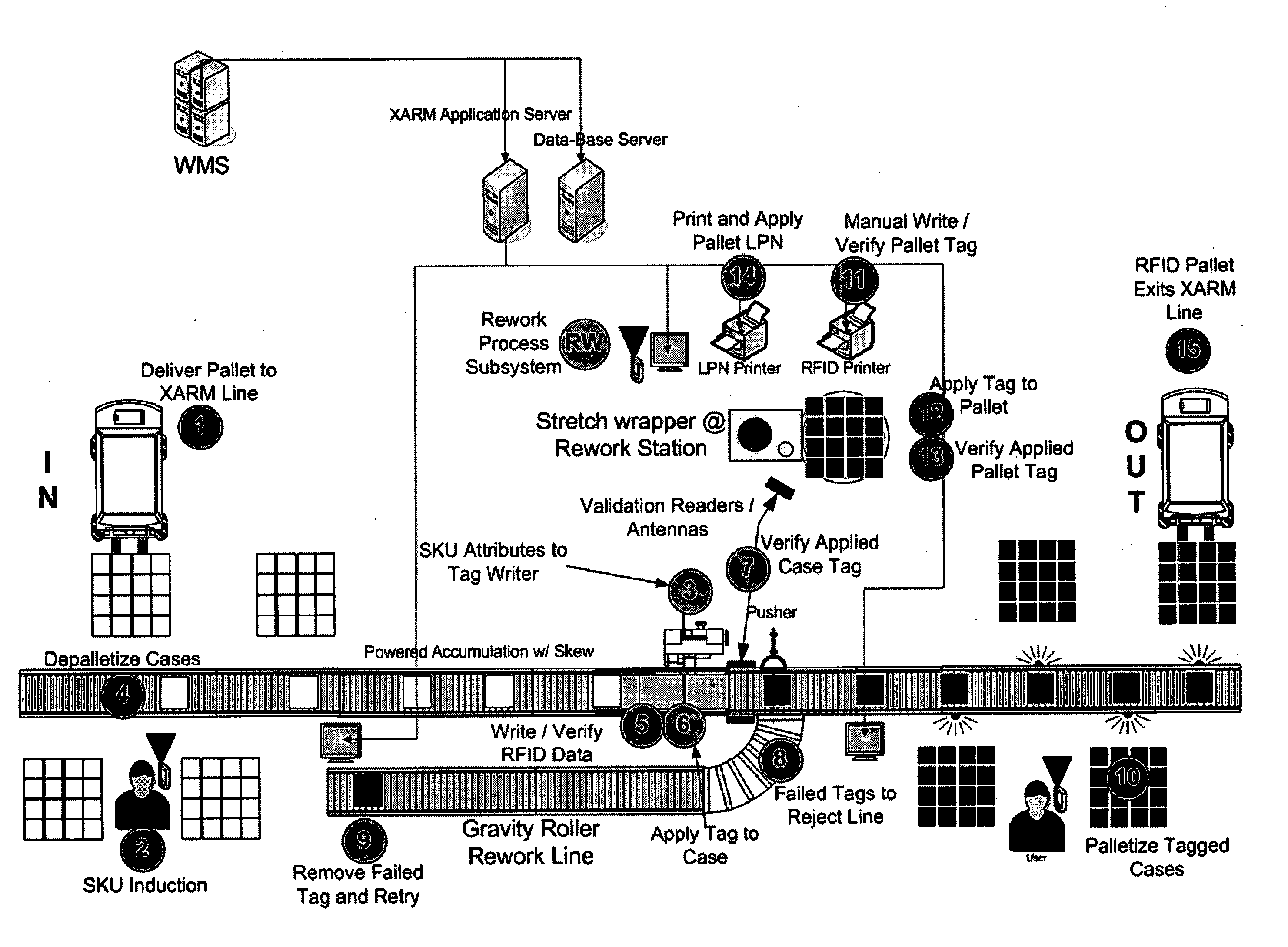Radio frequency identification application system
a technology of radio frequency identification and application system, which is applied in the direction of burglar alarm mechanical actuation, electromagnetic radiation sensing, instruments, etc., can solve the problems of inconvenient no single standard enjoys universal acceptance, and requirements of this type are disruptive to suppliers' operations, systems, personnel, costs and schedules, etc., to facilitate proper placement of rfid tags
- Summary
- Abstract
- Description
- Claims
- Application Information
AI Technical Summary
Benefits of technology
Problems solved by technology
Method used
Image
Examples
Embodiment Construction
[0023] The making and using of the presently preferred embodiments are discussed in detail below. It should be appreciated, however, that the present invention provides many applicable inventive concepts that can be embodied in a wide variety of specific contexts. The specific embodiments discussed are merely illustrative of specific ways to make and use the invention, and do not limit the scope of the invention. Unless otherwise provided, like designators for devices employed in different embodiments illustrated and described herein do not necessarily mean that the similarly designated devices are constructed in the same manner or operate in the same way.
[0024] The present invention will be described with respect to an exemplary embodiment in a specific context, namely, an RFID application system within an RFID system. The particular embodiments described herein are applied supply chain management systems in the retail industry. The principles of the present invention may be appli...
PUM
 Login to View More
Login to View More Abstract
Description
Claims
Application Information
 Login to View More
Login to View More - R&D
- Intellectual Property
- Life Sciences
- Materials
- Tech Scout
- Unparalleled Data Quality
- Higher Quality Content
- 60% Fewer Hallucinations
Browse by: Latest US Patents, China's latest patents, Technical Efficacy Thesaurus, Application Domain, Technology Topic, Popular Technical Reports.
© 2025 PatSnap. All rights reserved.Legal|Privacy policy|Modern Slavery Act Transparency Statement|Sitemap|About US| Contact US: help@patsnap.com



